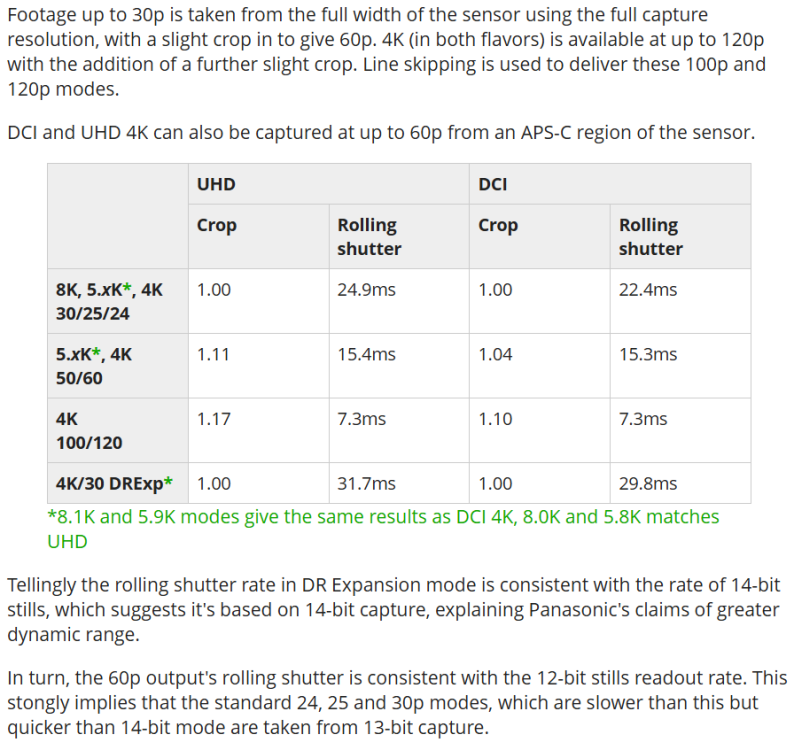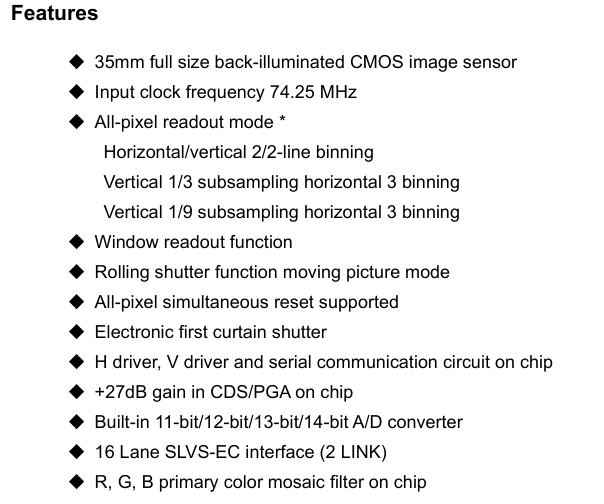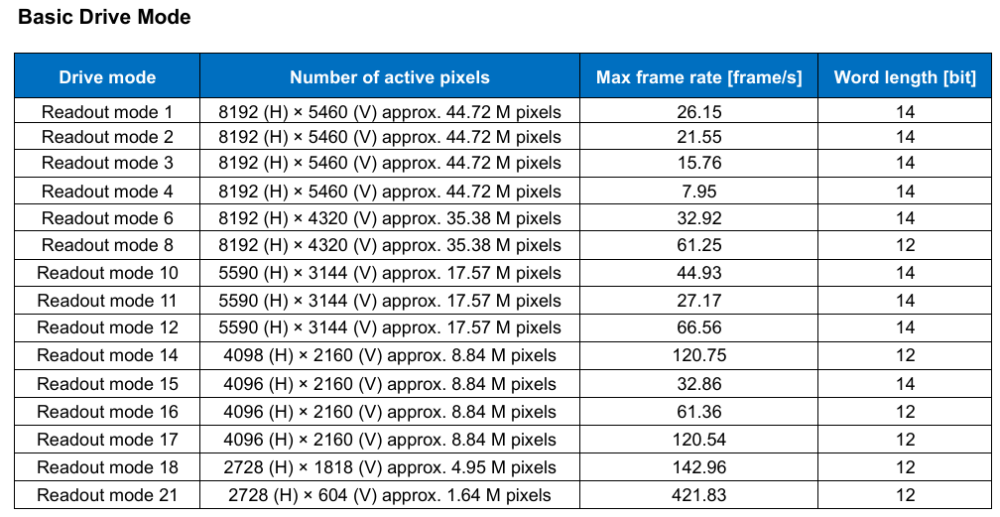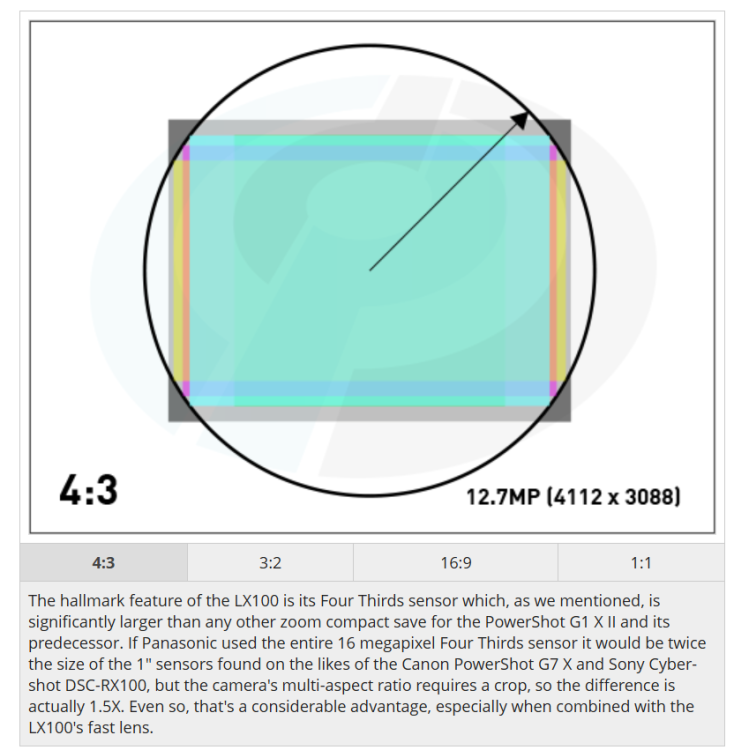
ac6000cw
Members-
Posts
675 -
Joined
-
Last visited
Content Type
Profiles
Forums
Articles
Everything posted by ac6000cw
-
I think pretty much any sector on social media (unless it's very, very niche) is going to be saturated with content. All you can really do is make your content as interesting and easy to watch as possible. If you are going to be on-camera and/or talking to the audience it'll probably take lots of practice and time to develop your 'presentation style' unless you have a natural talent for it. Those things are far more important than small differences in picture quality between cameras etc. that your viewers won't notice. Don't over-think the hardware side of things and buy extra stuff that you think you *might* need (and then waste time working out how to use it) - the KISS principle.
-
I agree, and a decent U3/V30 rated SDXC card can handle 200 Mbit/s (25 Mbyte/s) no problem, which is very high bitrate for long-GOP HEVC and should be pretty much transparent video quality. I've been using relatively cheap 128GB or 256GB Sandisk Extreme or Samsung Pro Plus UHS-1 U3/V30 cards for years (both rated for over 100 Mbyte/s write speeds by their manufacturers).
-
I had a play with an OM-3 a few days ago. I found it uncomfortable to hold, mostly because there's no grip and some of my fingers ended up resting/rubbing on the front dial. With the 12-40mm F2.8 lens on it, the lack of grip etc. for my right hand meant far more of the weight had to be supported by my left hand and arm which got uncomfortable after a while. Also the 'record' button is very close to the nearest dial, so my finger was rubbing against the knurled edge of the dial every time I pressed it. It's too much of a compromise of style over ergonomics for me to be interested. Honestly I think the internals of the OM-1 in an OM-5/E-M5 iii style body would be a more attractive and usable camera, even if the overall size had to increase a bit over those.
-
Just watched it - some quite interesting development background stuff, e.g. how the 'cropless' stabilization works.
-
It does have active cooling (AFAIK the same system as used on the S5 ii). But it's having to deal with a lot more heat due to almost 2x the data rates if reading the full sensor area (compared to the S5 ii), and 8K video is 4x the pixels per frame vs. 4K video so the processing and encoding pipeline is working much harder. Based on the review comments and RS results, the less-than-8k video is oversampled from 8k capture, so probably great quality but a lot of heat to deal with (and short battery life).
-
I agree. It's a tool, it's a piece of design engineering and like all designs it's full of compromises necessary to get a product 'out the door' to meet a price target and make enough profit to make it financially worthwhile. Panasonic are basically in the mid-price, good value area of the market, so compromising on the sensor speed (of a hybrid targeted camera) to meet a lower price point than an R5 ii or Z8 seems reasonable to me. In any case the Z8/Z9 sensor might not be available to them, and the R5 ii sensor probably definitely not. It's a mid-range highish-res camera, not a high-end one. It's launch price is $400 cheaper in cash terms than the S1r was at launch in 2019, which means if you allow for US inflation of 26% over that time it's about 40% cheaper in real terms than the OG S1r - with much better video and AF performance, in a smaller and lighter body.
-
Re: overheating and battery life, this is Geeky Nerdy Techy's comments about it (based on shooting outdoors in 34C temps in Australia) - it should play from 27:09, the 'Overheating & Runtime (Major Warning)' section:
-
I think that pretty much agree. I also agree with Gerald Undone's comment that it should have a general no-oversampling/low rolling shutter option in addition to the normal/extended DR switch. The (line-skipped) 4k120p is around 8ms RS, so we know it's possible, albeit with less DR and less sharpness etc. But at the price (which will fall to sub-$3000 probably fairly quickly), it seems like a lot of camera for the money. If you want 8k video with much lower RS, go buy a more expensive camera...
-
Where does it say that in the CVP video?
-
It's £2,999 in the UK at Wex - pretty aggressive pricing, I think. dpreview initial review - https://www.dpreview.com/reviews/panasonic-lumic-dc-s1rii-initial-review#WNV Rolling shutter figures taken from the review: PetaPixel review:
-
Yes - a mere 4kg and 470mm long (and $6000!)... 😉 (but actually the 315mm long, 2kg M43 OMDS 150-400mm f4.5 TC1.25x IS PRO Lens is even more expensive - £6700 in the UK)
-
They'll both be the Panasonic 'video flagships' of their respective lens mounts, basically, each with (in system terms) their own strengths - e.g. M43 lenses are generally somewhat smaller and lighter, FF has better low-light performance. For example, I regularly happily carry around a bird reserve an OM-1 plus Pana 100-300mm lens (total weight about 1.1 kg), but I'd never want to carry around an S5ii plus Sigma 150-600mm f5-6.3 (total weight about 2.8 kg). Both combos have the same FOV at the long end. At this point in time, I don't really see M43 and FF competing very directly with each other.
-
Canon PowerShot V1– C-Log 3, Built-In ND & Cooling Fan
ac6000cw replied to zerocool22's topic in Cameras
There's already a thread about this camera - https://www.eoshd.com/comments/topic/90124-canon-v1-14”-sensor-16-50mm/ I've owned at least two 'pocket' cameras with a built-in ND - the Pana LX7 and the ZV-1. I suspect they have them because making an iris that closes to e.g. F22 on a small lens/sensor is probably quite difficult (and they don't have filter threads to add an ND), so to maintain 180 degree shutter angle for video in very bright conditions means an internal ND is fairly essential. -
I suspect there's a decent market for an L-mount 'camcorder-style' body if they get the specs and the ergonomics right. Panasonic has the video pedigree to sell something like that, I think.
-
It actually looks like a decent camera (in the ZV-1 sector of the market), especially as it has 4k60p, an internal ND and dual-pixel AF.
-
Assuming the rumors are correct, it looks more like a cheaper R5 ii competitor to me. If it's intended to be a replacement for both the S1r and S1h, it'll be interesting to see what the rolling shutter performance is like. The Sony IMX366AJK sensor 'stephen' mentioned above is rated for 120fps at DCI 4k, 12-bit readout (I guess using 2 x 2 pixel binning with a vertical crop, as it's a native 3:2 aspect ratio), and DCI 8k at 60fps:
-
it's been officially announced - https://www.dpreview.com/news/3287382042/canon-announces-powershot-v1-vlogging-camera From dpreview:
-
Panasonic and Olympus M43 lens zoom rings turn in opposite directions (and it catches me out regularly...), so one of them must be the same as Nikon 🙂
-
I suspect Nikon might not care too much about grumpy existing RED customers, if the lower prices increase the total RED sales revenue (and they sell expensive Nikon 'cinema' lenses alongside them). Nikon seem to be pretty aggressive on camera body pricing/value these days, and also seem to be taking video seriously as a way of increasing sales and 'market presence'. It'll be interesting to see what their next move is in the 'cinema' market.
-
They contained MFT sensors, but never used the full area of it (I owned an LX100 for few years) - see the interactive graphic here: https://www.dpreview.com/reviews/panasonic-lumix-dmc-lx100 It's the same basic idea that the GH2 used (which had an 18.3MP larger-than-MFT sensor, with a maximum of 16MP used). On the LX100, the highest pixel count aspect-ratio was 4:3 giving 12.7MP out of 16MP:
-
The LX100 & LX100 ii also had it for stills (different aspect ratio crops out of 16MP & 20MP m4/3 sensors, but none gave you the full sensor area).
-
Well, the S1R was $3699 at launch back in 2019, and the Z8 was $3999 at launch in 2023 - and that has a 45.7MP stacked sensor (from Sony?). So I think they'll either launch a cheapish high-res camera (S5R ?) aimed primarily at stills use (in A7CR/Z7ii price territory) followed maybe by a higher-end video-orientated camera later (S5H ?), or attempt to merge both (but I think they'd have to undercut the Z8 street price to sell enough). But like you, I suspect they'll go for the high-res 'value' option...
-
So if it's going to be 45 - 47 MP, I wonder if it's going to be a fast stacked sensor and possibly the new camera might be a replacement for both the S1r and the S1H (giving that 8K video capability with usable rolling shutter)?
-
Both correct. I don't think the E-M1 iii had a flash bundled with it, but the E-M1 ii had the FL-LM3 bundled - if you've got that one, the specs (from the E-M1 ii manual) are:
-
I don't think Fuji (or Sony) does the processing in-camera to produce the final high-res image though? AFAIK they supply software to post-process the images. I think that was the point John was making - Oly/OMDS and Panasonic do that processing in-camera (I don't know about Pentax).








